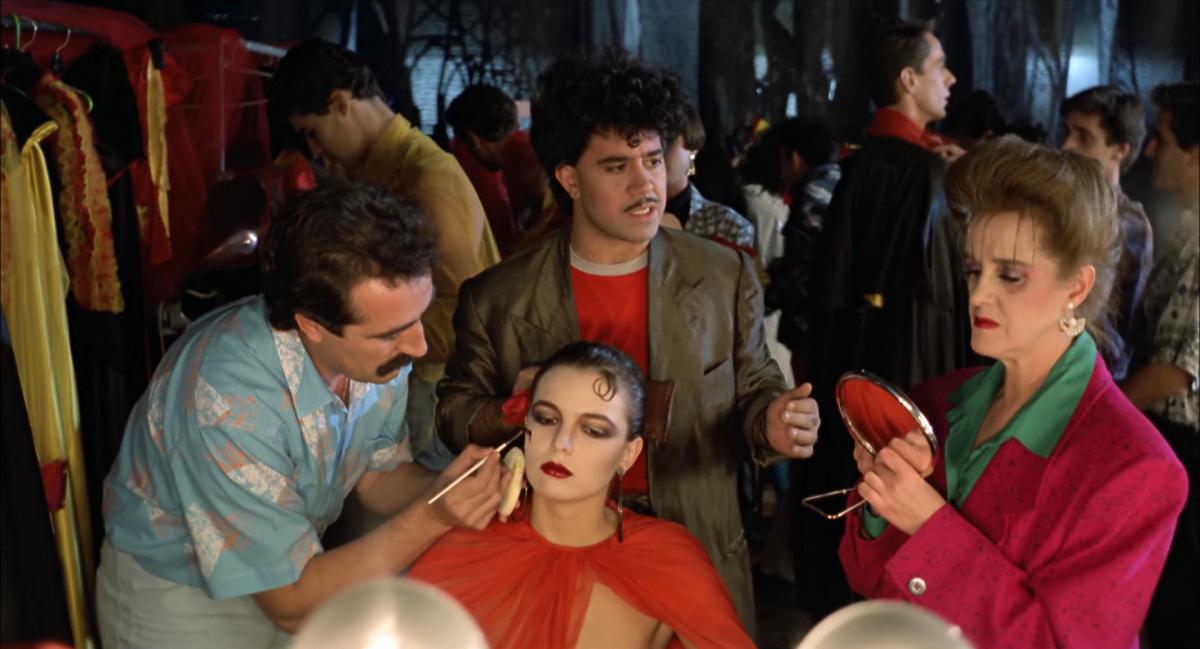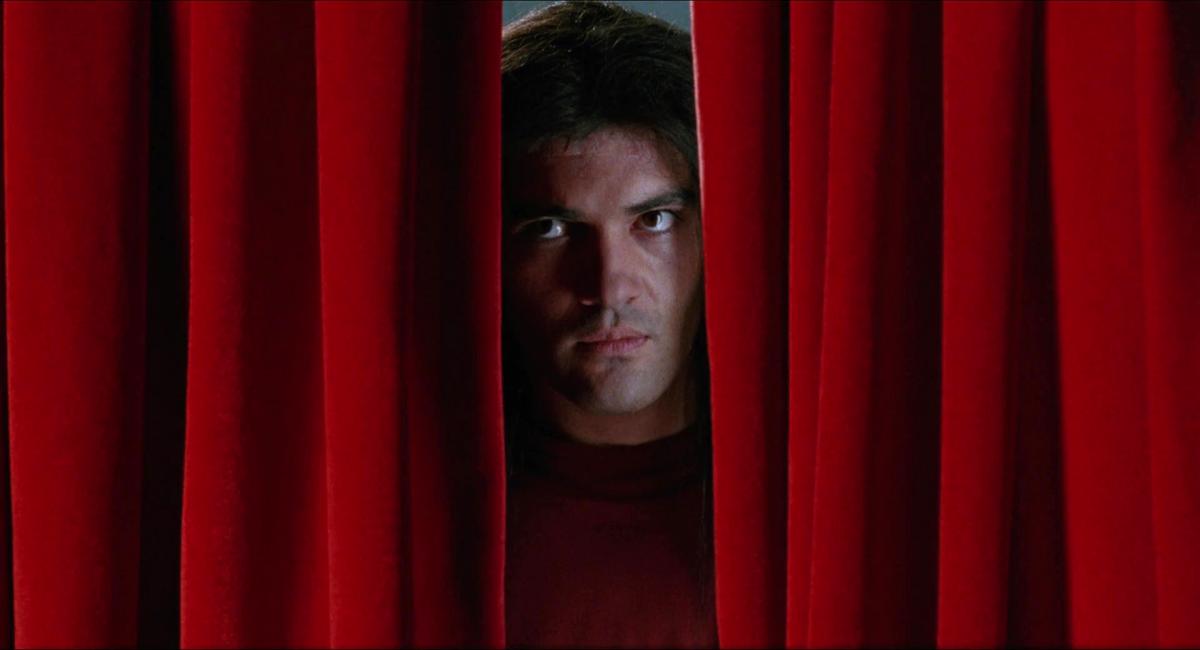Pedro Almodóvar
Matador (1986) and Átame! (1989)

Time and again, I wonder at my fascination with cinema. Despite its hundred-year history, film fulfils my desire for a comprehensive knowledge of the world. I don’t need to travel the world. Sitting in a comfortable armchair, I’m granted the possibility of seeing how different and yet peculiar, how familiar and yet unknown the body language of Spaniards, for example, appears to me. The possibilities of capturing the body on celluloid seem inexhaustible. That is what I claim after viewing the films of Pedro Almodóvar. Almodóvar is funny. Everything in his films is playful, stylised and, at first glance, mannered. He affords himself a great cinematic freedom that leads to superior sophistication and, conversely, often to satire and sentimentality. The beautiful pseudo advertising spots he incorporates into his films, demonstrate his peculiar approach. The virtuoso beauty of these spots reverberates throughout the film. The film itself is conceived in a different way. In the erotic scenes, you sense a pornographer at work. Spots and films show two kinds of beauty and emotion, each with their own specific fascination. The characters’ explicit desires are funny. I’m thinking in particular of the love and death ecstasy in Matador or the chess player’s plans in Átame! [Tie Me Up! Tie Me Down!] The film constantly switches between advertising camp, erotic scenes and the style of television series. It is wonderful to behold how laughable and also extremely moving banalities can be. Between the recognisable words and the unreal bodies, a strange pulsion emerges.
These films are beautiful baroque stagings full of intriguing allusions and references. They are labyrinths in which we wander and get lost. I say “baroque” and not “mannerist”. Almodóvar is too vital and bold, too sentimental and flippant to be called mannerist. His sophistication is never precious. Despite their complexity, these films question nothing and hold nothing at bay. On the contrary, they affirm and attract. Almodóvar’s beautiful films counterbalance the dominant academicism. Not the story, not the script, not the dialogues determine his films, nor does the preciosity of the image. The power of the films lies in the acting, the physical interaction between the actors confronted with the camera and direction. The actors play in front of a camera that always gives them the freedom to complement, encourage, correct and ironise each other. I am thinking, for instance, of the very last shot of Átame! In the car, the three characters are looking in front of themselves, humming and singing along to the strains of the radio. A brilliant scene. A moving happy ending. It contains everything, from bourgeois values to sentimental ideals, hypocrisy and sincerity. The three actors each endow the scene with a different accent. One woman is objectifying and ironic, the other intensely moved. The boy is looking for his place.

(1) Image from Matador (Pedro Almodóvar, 1986)
(2) Image from Átame! (Pedro Almodóvar, 1989)
This text originally appeared in Kunst & Cultuur, January 1991.
This translation was published by courtesy of Reinhilde Weyns and Bart Meuleman.
With the support of LUCA School of Arts, LUCA.breakoutproject.

